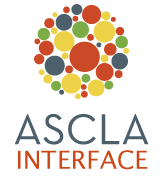By Julie Sears, online subscription manager,Sociometrics Corporation
One of our most under-served populations—incarcerated youth—is one of the highest risk populations for engaging in high risk social behaviors that can ultimately threaten the entire community. In 2000, young adults, 15 to 24 years old, represented approximately 25% of sexually active people in the United States yet accounted for nearly 50% of new STI cases. Adolescents in detention facilities report more risk behaviors and begin these behaviors at a younger age than adolescents out in the community. Many common characteristics of the detained youth compound their lack of successful behavioral skills and access to knowledge that may reduce or eliminate the risky activities that ultimately lead to greater community health problems. These attributes include: usually living in poverty and high crime situations; little to no access to regular or quality health care; in relatively poorer overall health than non-detained peers; and spending significant time away from the classroom, with fewer quality educational resources when in class.
While detained youth spend only a few weeks in detention centers, a community or correctional system library has the ability to provide health education programs and materials that can be used repeatedly by variety of community based professionals – including nurses, public health coordinators and correctional health care staff – to deliver proven and effective prevention programs that reduce the instances of high risk behaviors and thereby reduce the prevalence of HIV AIDS and STIs. By providing a full set of program materials on-site at the detention centers that includes “self service” and age-appropriate multimedia computer programs that are accessible on a computer, the corrections facility staff can use the materials on an on-going basis with new groups of youth on a frequent basis.
Sociometrics’ Rikers Health Advocacy Program addressed this situation with a science-based set of program materials. The health education program addresses adolescent STD/HIV/AIDS, drug abuse consequences, sexual behavior, health and AIDS risk behaviors and strategies for seeking health and social services. The program consists of a short-term intervention of four one-hour, small-group discussion sessions. These interactive sessions provide opportunities for the youth to define high risk attitudes and behaviors, suggest alternative actions and complete challenging problem solving exercise that are designed to help the participants understand the reasons underlying their high risk behaviors. Sociometrics Corporation developed these program materials with grant support from the National Institute of Child Health and Human Development and the U. S. Office of Population Affairs. The outcome of the initial study found that the intervention participants were far more likely to use condoms after the program than their control group cohort. More information about the Riker’s Health Advocacy Program is available at www.socio.com/passt10.php.
Regardless of the program materials used, it is imperative that simple, easy to use interactive prevention materials be made available to over 1.5 million annually incarcerated adolescents to help reverse significant health consequences that affect the individuals and society as a whole. To be able to contribute to reducing teen pregnancy, incidents of STIs, and the spread of HIV AIDS, we must help our communities do a better job providing health education to this very vulnerable, yet consequential population.
Resources and Bibliography
Card, J.J. et al., Sociometrics Corporation, PASHA/Rikers Health Advocacy Program (RHAP) – Protocol Handbook, Users Guide, http://www.socio.com/passt10.php.
Magura, Stephen, et al., “Outcomes of Intensive AIDS Education for Male Adolescent Drug Users in Jail,” Journal of Adolescent Health, 15:457-463, 1994
Romero, Erin G. et al., “A Longitudinal Study of the Prevalence, Development, and Persistence of HIV/Sexually Transmitted Infection Risk Behaviors in Delinquent Youth: Implications for Health Care in the Community”, Volume 119, number 5, pp. e1126-e1141 May 2007, http://www.pediatrics.org.
Green, Elizabeth, et al. Health Promotion and Education in Youth Correctional Facilities, Pediatric Nursing, May 1999, http://www.findarticles.com.
